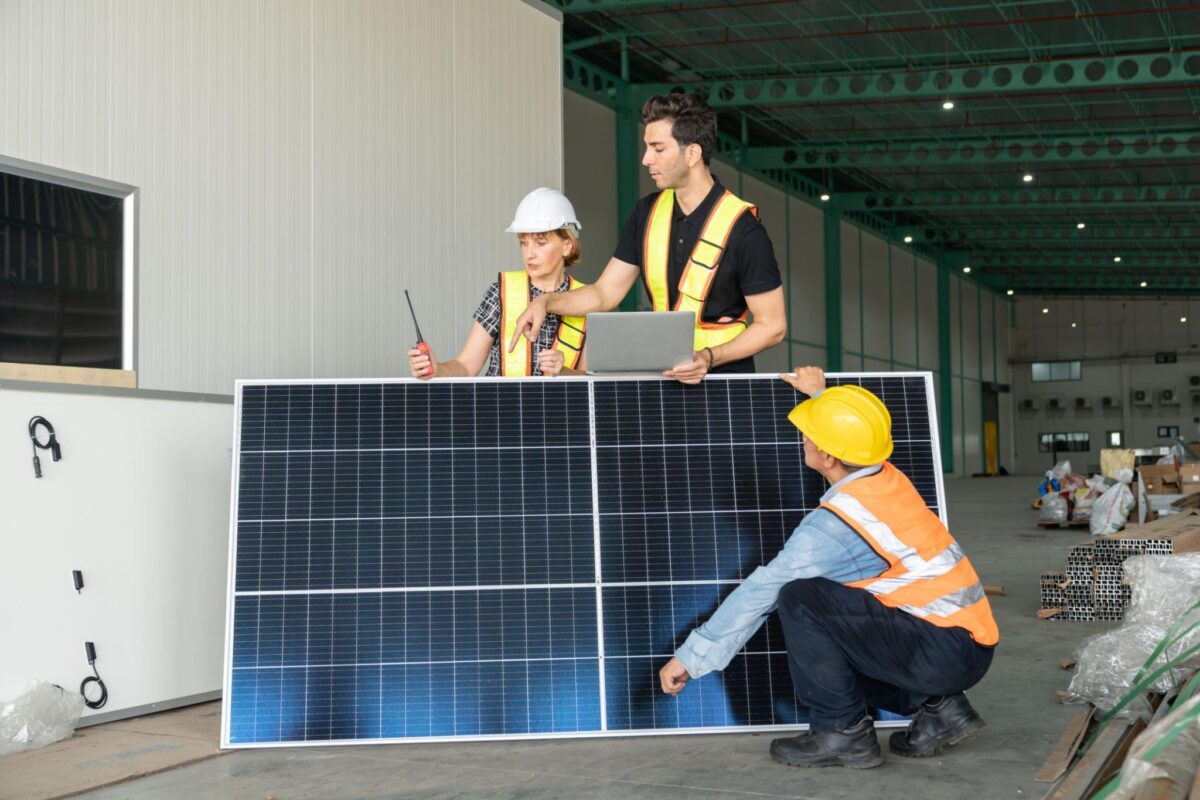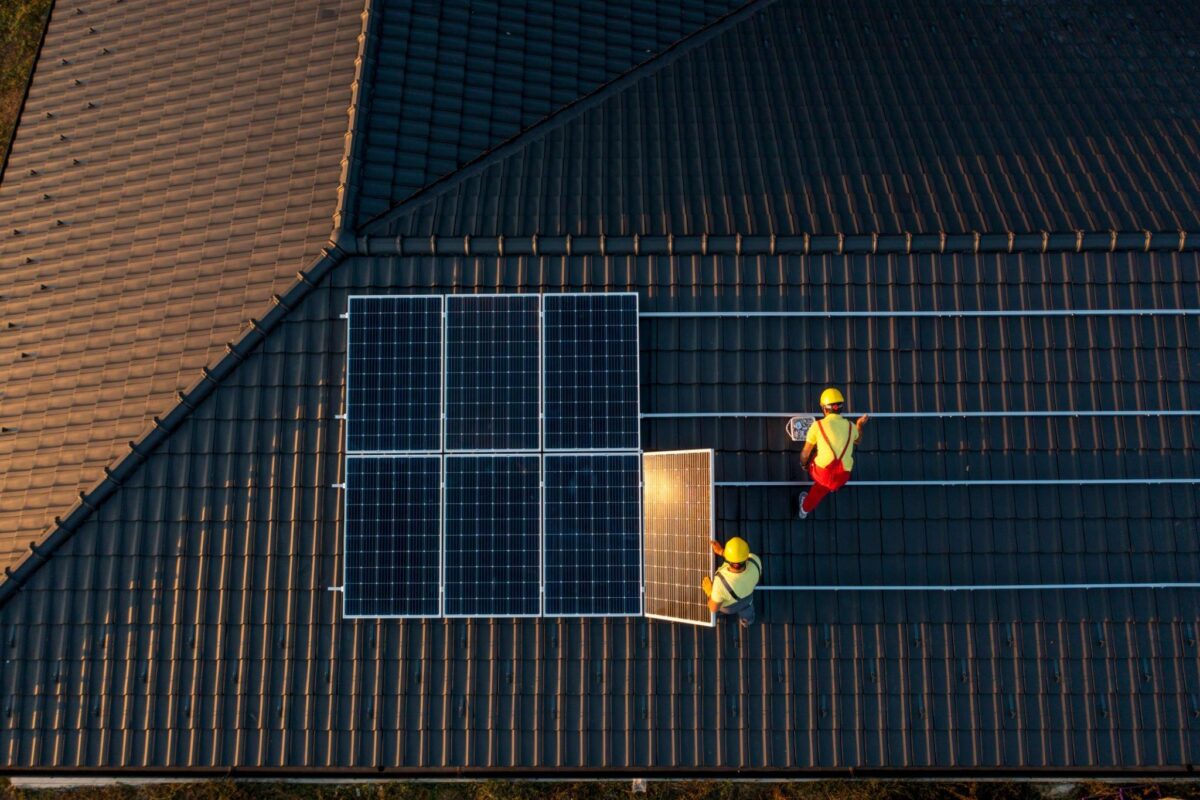Saadaksesi kaiken irti aurinkokunnastasi, sinun on ymmärrettävä, miten aurinkokunta mitoitetaan vastaamaan energiankäyttötapojasi. Seuraa näitä ohjeita oppiaksesi arvioimaan kokoa, laskea aurinkotarpeen, ja valitse oikea paneeli saadaksesi kaiken irti aurinkosähköasennuksestasi.

Mikä on aurinkokunta?
Aurinkoenergiajärjestelmä on uusiutuvan energian järjestelmä, joka koostuu aurinkopaneeleista, invertterit, aurinkokennoenergian varastointijärjestelmät, kiinnikkeet ja muut tarvikkeet, koko järjestelmä on kytketty kodin tai yrityksen sähköverkkoon johtojen ja kaapeleiden kautta, aurinkosähkömoduulien avulla aurinkoenergian muuntamiseen käyttökelpoiseksi sähköksi.
Aurinkosähköjärjestelmät tarjoavat käyttäjille luotettavan, puhdas energialähde useille eri aloille ja käyttötarkoituksiin, kuten asuin, teollinen ja kaupallinen, maatalous, yhteisöhallinnon hankkeita, syrjäisille alueille ja saarille, ja hätävarmuuskopiointi.
Tärkeimmät järjestelmän komponentit
Tietty aurinkokunta koostuu erilaisista komponenteista järjestelmätyypin mukaan, sivuston sijainti ja sovellus. Mutta sen pääkomponentit ovat hyvin erilaisia, jotka sisältävät aurinkopaneelit, invertterit, akkujen energian varastointijärjestelmät, suluissa, johtojen liittimet, valvontajärjestelmät, jakelulaatikot ja kuormat (laitteet).
- Aurinkopaneelit: Aurinkopaneelit ovat aurinkokunnan ydinkomponentteja, auringonvalon muuntaminen tasavirtasähköksi aurinkosähköilmiön avulla.
- Invertterit: Invertterit muuntavat aurinkopaneelien tuottaman tasavirran vaihtovirraksi kodin tai yrityksen käyttöön.
- Akkuenergian varastointijärjestelmät: Valinnaisia akkuenergian varastointijärjestelmiä käytetään ylimääräisen aurinkoenergian varastoimiseen hätäkäyttöä varten, kuten yöllä tai sateisella säällä.
- Kiinnike: Kiinnikettä käytetään aurinkopaneelin asennukseen, varmistaa, että se voidaan sijoittaa oikein ja kiinnittää auringossa auringonvalon imeytymisen maksimoimiseksi.
- Johdot ja liittimet: Aurinkopaneelien kytkemiseen käytetään johtoja ja liittimiä, invertterit ja akkuenergian varastointijärjestelmät muodostavat yhdessä täydellisen aurinkojärjestelmän.
- Valvontajärjestelmä: Valvontajärjestelmää käytetään aurinkojärjestelmän suorituskyvyn ja tehon seurantaan, jotta käyttäjät ymmärtävät järjestelmän toimintakunto ja tekevät tarvittavat huolto- ja säädöt.
- Virranjakolaatikot: Sähkönjakelulaatikoita käytetään aurinkosähkön turvalliseen jakamiseen kodin tai yrityksen verkkoon, varmistaa järjestelmän turvallisen ja tehokkaan toiminnan.
- Ladata (laitteet) : Aurinkosähköjärjestelmään kytketyt sähkölaitteet, kuten valot, radio, televisio, tietokoneet, jääkaapit, jne.
Kuinka mitoittaa aurinkokunta
Arvio energiankulutuksestasi
Laske päivittäinen kWh-käyttösi
KWH-käytön määrittäminen sähkölaskustasi, on parasta katsoa 12 käyttökuukausia, jotta voit tarkastella käyttöhuippuja ja laaksoja yli vuoden ajalta. Ilmastointia voidaan käyttää kesällä ja talvella, mikä nostaa energiankulutuksesi huippuun.
Laske 12 kuukauden KWH yhteensä, jaa se 12 saadaksesi keskimääräisen kuukausikulutuksesi, ja jaa se arvolla 30 saadaksesi keskimääräisen päivittäisen KWH-käyttösi.
Katso auringon huipputunnit
Voit määrittää energiantuotannon, sinun on tiedettävä aurinkoenergian huipputunnit missä asut, Keskimääräiset aurinkotunnit vaihtelevat suuresti sijainnistasi ja paikallisesta ilmastosta riippuen.
Löydä suurimmat auringonpaistetut tunnit etsimällä alueesi aurinkokartasta, kuinka monta tuntia päivässä auringonvalo tuottaa huippunsa. Tyypillisesti, alueilla, jotka sijaitsevat kauempana etelästä ja joissa kosteus on alhaisempi, Auringonhuipputunnit ovat pidempiä kuin pohjoisilla tai kosteilla alueilla, ja auringonpaisteen huippu vaihtelee myös vuodenajan ja tarkemman sijaintitiedon mukaan.
Määritä aurinkopaneelien tehokkuus
Aurinkosähköpaneelin rakenne ja laatu voivat johtaa aurinkopaneelin lähtötehoon, joka vaihtelee 110 wattia 400 wattia. Nämä tiedot on yleensä lueteltu aurinkopaneelin teknisissä parametreissa, jotka löydät valmistajan verkkosivuilta tai aurinkopaneelin tuoteoppaasta. Hyötysuhde ilmaistaan prosentteina ja ilmaistaan aurinkopaneelin kyvynä muuttaa auringonvalon energia sähköksi.
Aurinkokuntasi koon laskeminen
Järjestelmän koon laskeminen, muuntaa ensin päivittäinen käyttösi watteiksi. Kerro tämä luku kWh:lla 1,000 selvittää, kuinka monta wattia tarvitaan sähkön tuottamiseen päivässä. Esimerkiksi, jos sähkönkulutuksesi on 30 kWh päivässä, sinun täytyy luoda 30,000 wattituntia päivässä.
Seuraava, jaa wattitunnit auringonpaistetuntien määrällä. Tämä laskelma antaa sinulle aurinkokuntasi tuottaman kokonaistehon. Jos sinun on luotava 30,000 wattitunteja ja on 6 tunnin huippu auringonpaistetta, järjestelmäsi on luotava 5,000 wattia päivässä.
Lopulta, jaa se järjestelmän kunkin paneelin teholla. 5000 watin tarpeeseen, jos paneelisi tuottavat 250 wattia paneelia kohden, yhteensä 20 paneeleja tarvitaan päivittäisten tuotantovaatimusten täyttämiseksi. Toisaalta, jos paneelit tuottavat vain 200 wattia tehoa, 25 paneeleja olisi käytettävä saman tuloksen saavuttamiseksi.

Arvioidun järjestelmän suunnittelun hienosäätö
Jotta aurinkokunnan kokoarvio olisi mahdollisimman tarkka, sinun on myös otettava huomioon alueesi keskimääräinen auringonvalo, varjoa kotisi ympärillä, kattosi koko ja kulma, tai tarvitsemasi kattoasennuksen tyyppi.
Valitse kiinnitystyyppi
Kattoasennus on yksinkertaisin ja kustannustehokkain ratkaisu, koska se maksaa vähemmän kuin muut telineet.
Voit aloittaa etsimällä osoitteesi Google Mapsista ja tarkistamalla, onko etelänpuoleisille kattoasennusvaihtoehtoja olemassa, Ja tietysti, jos asut eteläisellä pallonpuoliskolla, etsi pohjoiseen päin olevia vaihtoehtoja, joissa aurinkokuntasi pitäisi osoittaa päiväntasaajaa kohti.
Jos kattoasennus ei ole vaihtoehto, Voit myös harkita asennusta maahan tai pylvääseen. Voit sijoittaa aurinkopaneelit mihin tahansa suuntaan maksimoidaksesi auringonvalon vastaanoton.
Suuntasi oikein
Säädä aurinkopaneelien asentoa, Varmista, että vältät mahdollisia varjoja saadaksesi mahdollisimman paljon auringonvaloa. Mahdollisuuksien mukaan, se asennetaan tietylle korkeudelle maasta, jotta maasta heijastuva valo ei estä sitä.
Valitse oikeat aurinkopaneelit
Jos sinulla on suurempi alue käytettävissä, voit ostaa enemmän ja suurempia paneeleja, mutta jos sinulla on rajoitettu alue käytettävissä tai osittainen varjostus, sitten käytetään vähemmän pieniä, tehokkaat paneelit ovat kustannustehokkain pitkän aikavälin ratkaisu. Voit lisätä lisää paneeleita myöhemmin vastataksesi lisääntyneeseen energiantarpeeseen.
Laske aurinkokunnan teho
Kun olet määrittänyt edellä mainitut tekijät, voit laskea aurinkokuntasi tehon seuraavan kaavan avulla:
Aurinkopaneelien teho = aurinkopaneelien kiinteä kokonaisteho × aurinkopaneelien lukumäärä × aurinkopaneelien hyötysuhde × auringonpaisteen kesto
Huomaa, että sinun on myös otettava huomioon järjestelmähäviöt, kuten johtohäviöitä, invertterin tehokkuushäviöt, jne. Tyypillisesti, voit ottaa nämä häviöt huomioon aurinkokuntasi suunnittelu- ja suunnitteluvaiheessa.
Muita huomioita
Keskimäärin, tehokkaammat aurinkopaneelit maksavat enemmän ja aurinkosähkön tuotannon tehostaminen on välttämätöntä, mutta jos sinulla on tarpeeksi tilaa, voi olla viisasta valita suurempi määrä halvempia aurinkopaneeleja.
Lisäksi, jos alueellasi peritään korkea sähkön hinta, saattaa olla viisaampaa asentaa aurinkopaneelit kattosi länsipuolelle. Ne tuottavat sähköä myöhemmin päivällä, kompensoi korkeammat TOU-nopeudet huippukäytön aikana.
Johtopäätös
Aurinkoenergiaan siirtyminen on järkevä valinta, sekä taloudellisesti että ympäristöllisesti. Ennen kuin päätät muuntamisesta, sinun tulee arvioida huolellisesti energiatarpeesi, mukaan lukien sähkönkulutuksen kaltaiset tekijät, sijainti, ja kotisi koko.
Yhteistyössä GYCX Solarin kanssa, GYCX Solar on sitoutunut tarjoamaan käyttäjille täydellisen aurinkopaneeliratkaisujen sarjan. Ammattitaitoinen tiimimme räätälöi aurinkoratkaisun tarpeisiisi ja työmaasi olosuhteisiin sopivaksi. Palvelumme kattavat suunnittelun, asennus ja huolto varmistaaksesi, että voit hyödyntää aurinkoenergiaa parhaalla mahdollisella tavalla ja tuoda puhdasta, kestäviä energiaratkaisuja elämääsi ja työhösi.

